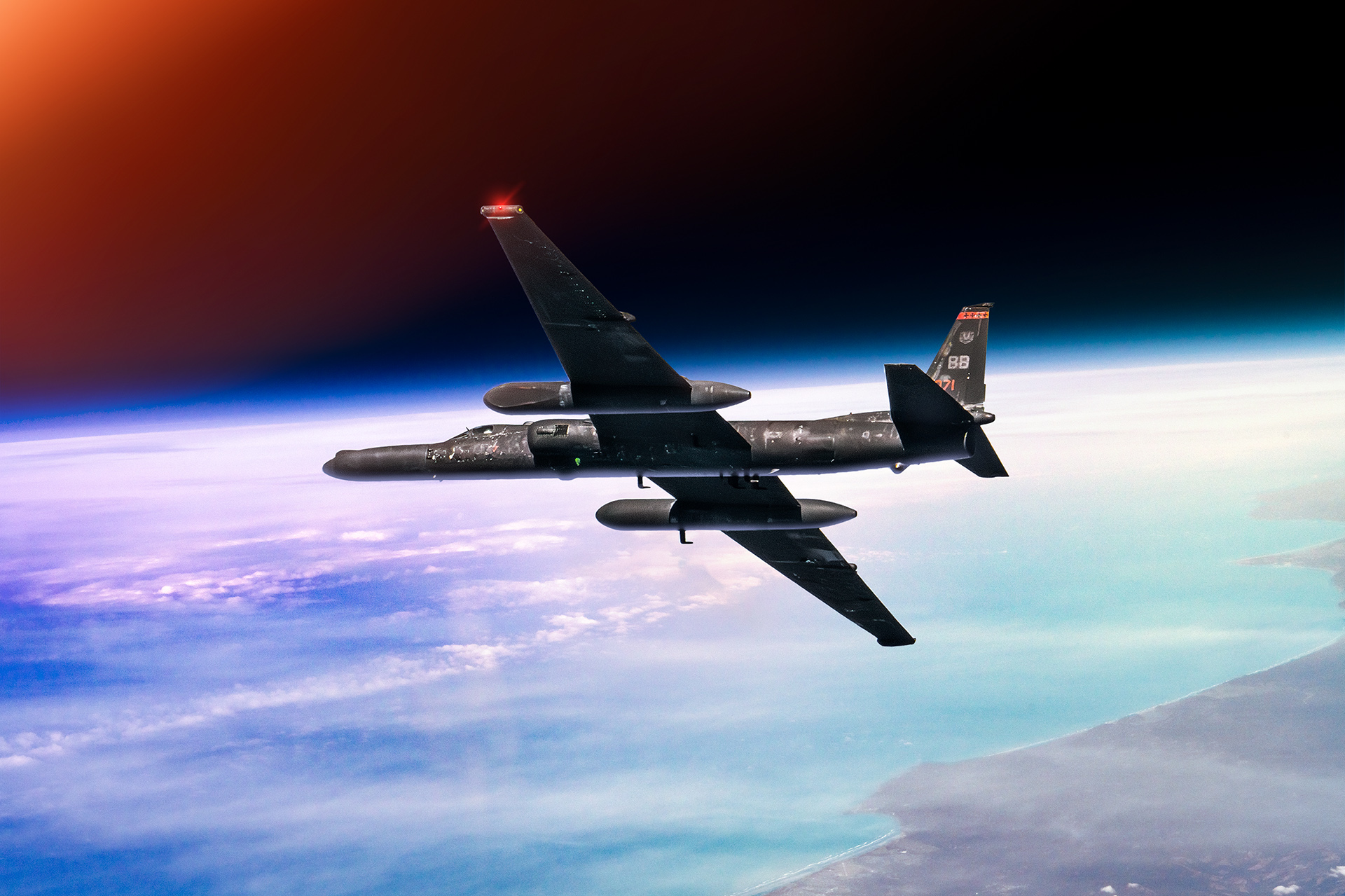This region of the atmosphere extends from 10-30 miles in altitude; in it, the Sun's radiation reacts with oxygen molecules to create ozone
What is the ozonosphere?
A body of air in motion
What is wind?
This occurs when the Northern Hemisphere is tilted toward the Sun on June 21st or 22nd; it marks the longest day of the year
What is the summer solstice?
The general term for various types of condensed water that fall to the earth's surface
What is precipitation?
A front which occurs when warm air moves into an area of colder air, overriding the cold air and causing it to sink because cold air is heavier
What is a warm front?
A layer of the atmosphere extending from the tropopause for about 30 miles; the U-2 Dragon Lady routinely flies through it

What is the stratosphere?
A wind blowing from behind the aircraft; it increases the aircraft's speed and saves fuel, enabling earlier arrival at a destination
What is a tailwind?
An apparent deflection of moving objects caused by the Earth's rotation
What is the Coriolis Effect?
A cloud that is very near to or touching the ground; it is composed of tiny droplets of liquid water that are at or near the surface of the geographical area
This first layer of the atmosphere extends from sea level up to 20,000 feet over the poles and to 55,000-60,000 feet over the equatorial regions; it ends at the tropopause
What is the troposphere?
Defined as a sudden, powerful, localized air current, especially a downdraft or downburst, this phenomenon has caused several jet accidents

What is a microburst?
An area of calm surrounding the equator, where the trade winds from the north and the south converge
What is the doldrums?
White, billowy, puffy clouds that indicate good weather

What are cumulus clouds?
A boundary between air masses; it is classified as warm, cold, stationary, or occluded
What is a front?
The last two layers of the atmosphere; in the image, they appear blue

What are the mesosphere and the thermosphere?
The effective lowering of the air temperature caused by the wind blowing warm air away from an object or human body
What is wind chill?
Warm, steady breezes that blow almost continuously toward the equator but appear to curve toward the west
What are trade winds?
This kind of cloud, characterized by its anvil-shaped top, is one you should never fly into
What is a cumulonimbus cloud?
A huge body of air, usuallly 1,000 miles or more across, with the same temperature and moisture characteristics
What is an air mass?
This region begins at an altitude of about 25 miles and extends outward to about 250 miles; and is characterized by the continous loss or gain of electrons in the atoms and molecules there
What is the ionosphere?
This tool for estimating wind speed originated in 1805 and is still widely used today;among other things, it describes each wind speed's effects on land and at sea
This wind pattern crosses the US at 30,000 to 35,000 feet, generally moving in a west to east direction; it is caused by strong temperature differences in the upper troposphere; in the winter, it gains strength and dips farther south
What is the jet stream?
Stationary lens-shaped clouds that form at high altitudes, normally aligned at right angles to the wind direction; they foreshadow bad weather and are often mistaken for UFOs
:max_bytes(150000):strip_icc()/__opt__aboutcom__coeus__resources__content_migration__mnn__images__2014__05__lenticular-clouds-double-SS-df2adc5d4e074235b684b0655a991b50.jpg)
What are lenticular clouds?